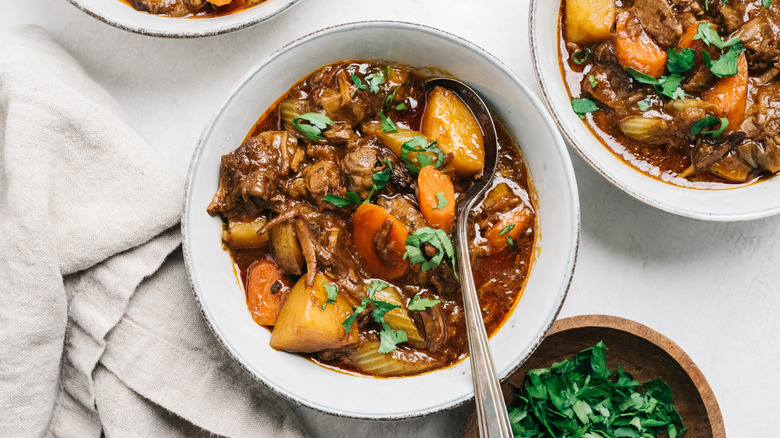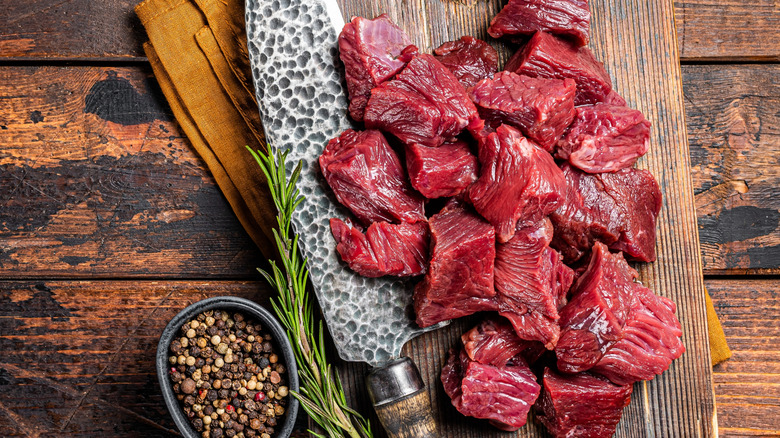The Major Timing Mistake To Avoid When Making Beef Stew
Beef stew is one of those classic dishes that everyone should have in their mental recipe book. Not only is it tasty, but it's very versatile. You can easily step up the flavor of beef stew by adding a splash of V8 juice, and many cultures have their own take on beef stew, like this umami-rich beef stew from Japan. While there are many different versions of this dish, there are some cooking tips that apply to every beef stew, no matter what fancy additions you throw in or what culture's version you are making. Chief among them? The cooking time. One of the biggest mistakes people make when cooking beef stew is not simmering the meat for long enough.
When you undercook the beef in your stew, you not only risk food poisoning and all the horrors that come with it, but you'll also end up with a hunk of tough meat to chew on. This is because the cuts of beef that are often used for stew take time to break down. The general advice is to cook the stew low and slow; at least two hours at around 180 degrees Fahrenheit. This is the temperature at which the meat's tough connective tissue begins to break down into gelatin, giving the beef a lovely, tender texture. Before serving, be sure to check that the beef has an internal temperature of 145 degrees Fahrenheit. This will guarantee that it is safe to eat.
The easiest way to cook beef stew
One of the easiest ways to make beef stew is in your slow cooker or crock pot since you can just set it and forget it. You can also change the heat settings throughout the cooking time if you need to. I personally like to crank mine up to a medium-low setting in the last hour or so of cooking, just to really make sure the beef is done and the stew is piping hot before serving.
Whether using a slow cooker or regular pot, before you add your beef to the stew, it is important that you properly brown the meat. Bust out your thick pan and some oil and cook your cubed meat over a medium-high heat until each side has a crust and some lovely color on it. Thanks to the Maillard reaction, this step adds a great deal of flavor to your beef and subsequent stew. You can skip the browning if you're running low on time, just be sure to add ample spices and herbs to your stew. This should make up for some of the beef's lesser flavor.

